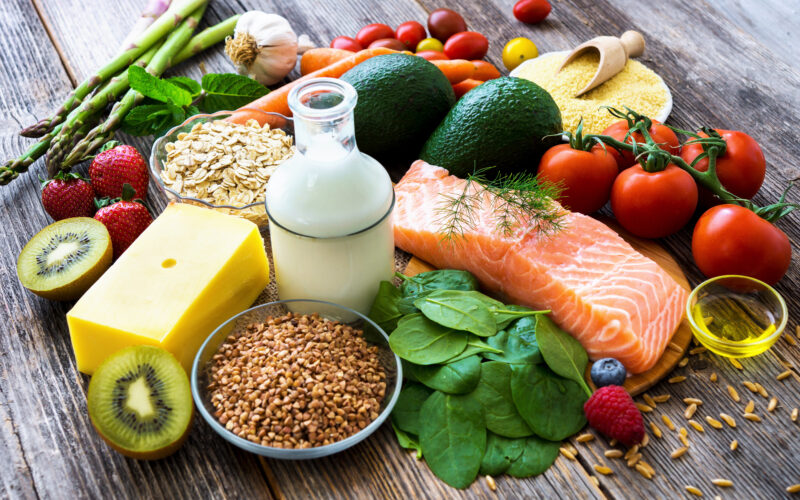Although Dietician Lily Nichols might be best known for her work on prenatal nutrition found in Real Food for Pregnancy, many of her readers sought her advice on how to best prepare before conception. Nichols teamed up with fertility awareness expert Lisa Hendrickson-Jack in order to author Real Food for Fertility, a new volume which distills everything you need to know about how diet and lifestyle impact fertility. In this Real Food for Fertility book review, I explain why this book is an all-encompassing guide to preparing your body for pregnancy, offering hope for any woman or couple looking to conceive in the near future.
Lily Nichols is a Registered Dietician and Nutritionist, certified Diabetes educator, and author. She also wrote Real Food for Gestational Diabetes and Real Food for Pregnancy. Both focus on pregnancy-specific nutrition. Nichols’ background is in clinical work with pregnant patients, focusing especially in gestational diabetes diagnoses. Her blog is full of posts on prenatal nutrition, and she is especially known for critical deep dives into nutritional research.
Nichols’ co-author, Lisa Hendrickson-Jack, is best known for her popular weekly podcast, Fertility Friday. Hendrickson-Jack is a Fertility Awareness Methods (FAM) expert, and discusses a plethora of topics on the cycle and fertility on her podcast. She is also the author of The Fifth Vital Sign, a book which aims to teach women how to better understand how their cycles are a key marker of health.
Who is the intended audience of Real Food for Fertility?
Real Food for Fertility is primarily aimed at women who are seeking to improve their fertility in order to conceive. This might be women who have been trying to conceive for a long time (even if their partner is the one with fertility issues), newlyweds seeking to understand their fertility before starting a family, or mothers wanting to increase their nutrient stores before having an additional pregnancy. The book is also aimed at women who have specific conditions that might hinder their fertility, such as polycystic ovary syndrome (PCOS) or hypothalamic amenorrhea (HA).
What are the main content areas of Real Food for Fertility?
What our ancestors ate vs. what we eat
The first few chapters of Real Food for Fertility discuss why preconception nutrient stores matter. In indigenous cultures, elders in the tribe often ensure that young couples are given the most “prized” foods, i.e., the most nutrient-dense foods, prior to getting married and conceiving a child (p.5). Examples of fertility-boosting foods vary based on tribal culture, but are nearly always animal-based foods, such as seafood, organ meats (think liver or heart), or raw, full-fat dairy.
Nichols and Hendrickson-Jack assert that many of the fertility issues in our modern society stem from a lack of quality nutrition, which is further exacerbated by our exposure to toxins and stressful yet sedentary lifestyles. Creating nutrient stores of micronutrients like vitamins and minerals is crucial to not only achieving conception, but setting up a healthy pregnancy before it even begins.
What foods help and hurt your fertility, and a note about vegetarian and vegan diets
In the following chapters, the authors delve into a number of food-related topics. They explain the proper macronutrient balance for fertility, what the true fertility-enhancing foods are, what foods hurt your fertility, and how a vegetarian or vegan diet can be harmful to your fertility. They even touch on the all-popular Mediterranean diet and correct some misunderstandings surrounding it. Many of the recommendations given in the nutrient sections are very similar to those in Real Food for Pregnancy. In Real Food for Fertility, these recommendations are explained even more thoroughly, with plenty of added studies to support their arguments.
What non-food factors can affect your fertility and what can you do about them?
Following this is an in-depth explanation of the menstrual cycle and how hormonal contraception disrupts normal female bodily functions. Readers are then given a basic overview of how to use fertility awareness to conceive, which is moreso aimed at those who are completely new to FAM. This is followed up by chapters on improving both egg and sperm quality and deep dives into PCOS and HA.
Finally, the book touches on a number of other factors that might impair your fertility, such as thyroid disorders or endometriosis. It discusses when supplementation might be needed, how toxins can affect your fertility, and if you might need lab testing to better screen for fertility issues. Real Food for Fertility ends with a practical preconception planning timeline and includes a week’s worth of meal plans and recipes.
What are the strengths of Real Food for Fertility?
Having already read both of Lily Nichols’ previous books and having had past training on a FAM method, I didn’t expect to learn as much as I did from Real Food for Fertility. Although the food recommendations are similar to Nichols’ pregnancy recommendations (which shows the universality of the nutrition principles!), this book had fantastic additions on the Mediterranean diet, vegan and vegetarian diets, improving male fertility through nutrition, and thinking through your preconception health.
Nichols and Jack directly address the difference between their food recommendations and the federal government’s guidelines
It should be noted that many of the food recommendations in Real Food for Fertility, such as increased animal protein and fat intake, go directly against many of the modern guidelines given by both the USDA and other health organizations; it was refreshing to see some of these claims directly examined. The authors also explain the issues with vegetarian or vegan diets, like their lack of many necessary micronutrients such as choline, iron, zinc, iodine, selenium, and vitamins B12, A, K2. Shorter luteal phases which make conception difficult or impossible are also more common to women on a vegetarian or vegan diet, and studies have found that the lowest rates of ovulatory infertility were found in women who consumed the largest amounts of animal protein (p. 132).
Nichols and Hendrickson-Jack then give vegetarians and vegans concrete tips on moving away from their previous eating patterns or adjusting them to allow for a more fertility-supportive diet, offering a number of recommendations.
There’s an excellent section on what to do about male infertility
Another section that was particularly strong was the chapter on improving sperm quality. Even though male infertility is a contributing factor in half of infertility cases (p. 210), a lot of information on fertility is focused solely on women. The authors of Real Food for Fertility aim to change that. They explore the current issues with decreased sperm quality and how modern guidelines for sperm count, motility, and morphology are set too low to fully diagnose male subfertility. They also give frank explanations of why sperm quality might be low for some men, and give the reader advice on how to improve sperm quality. Hint: they’re remarkably similar to the recommendations for improving egg quality and preconception nutrient stores for women!
The preconception planning guide at the end ties it all together
Finally, the ending chapter on preconception planning is a succinct summary of the book that is extremely helpful for readers looking for practical tips. The authors give a step-by-step checklist on what you should do before trying to conceive, with both diet and lifestyle recommendations. They also touch on spacing between pregnancies, providing evidence to support their recommendation that it’s ideal to wait at least 18 months postpartum to conceive a subsequent child.
Real Foods for Fertility’s limitations or blindspots
To be completely honest, it’s difficult to find a blindspot in Real Food for Fertility. Because the book draws on research done by two experts in different fields (nutrition and FAM, respectively), the book takes a pretty comprehensive look at this important topic. In fact, it’s nearly 500 pages long even before the citations are given! The chapters explore nearly every element of how fertility can be impacted by diet and lifestyle. Some readers might find Real Food for Fertility to be too long, but it’s easy to skip the passages that might not apply to you, such as the sections on various fertility disorders.
The one word of caution I would offer readers is that the chapters on the cycle and fertility awareness are not the equivalent of being trained in an official fertility awareness method (FAM). There are multiple nuances to using a FAM (such as how to properly interpret your chart when there are disruptions to either basal body temperature or cervical mucus) that are not fully explored in this book. This could be problematic if you are going off of this information alone to practice FAM. Your best bet would be to pair this book with fertility awareness training if you are new to FAM.
The verdict: To buy, borrow, or skip Real Food for Fertility?
Real Food for Fertility is a must-buy for any woman looking to become pregnant at some point in the future. If you’ve struggled to conceive, have recently gotten married and desire to start a family, or want to replenish nutrient stores before having a second (or beyond) baby, this book is a great guide. Readers with PCOS, HA, endometriosis, thyroid issues, or recurrent miscarriages will especially appreciate the research-heavy sections on these conditions.
Nichols and Hendrickson-Jack provide not only thorough explanations of these issues, but give guidance on ways to approach treatment. No matter where you are in your fertility journey, Real Food for Fertility can offer key information for improving your preconception nutrient stores and your health before pregnancy. With over 2,000 references included, this book is a trove of research and practical guides that will teach you something new regardless of your background.











